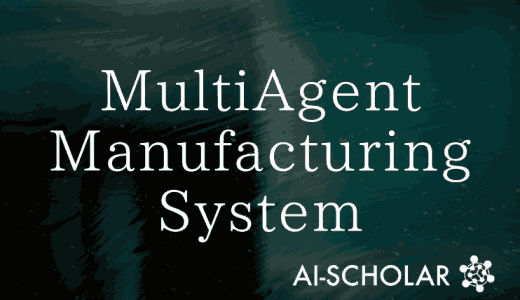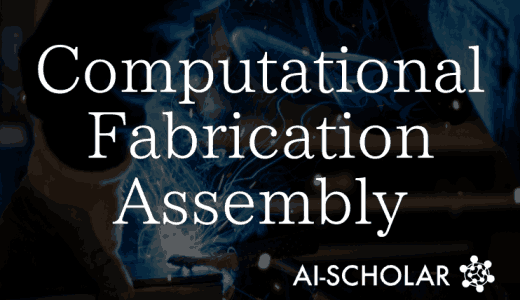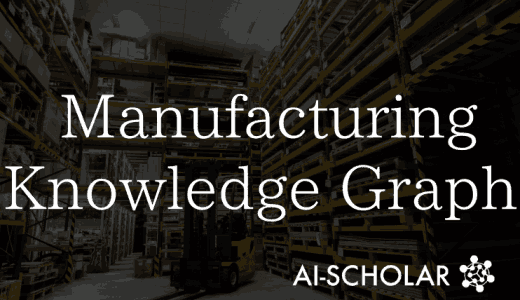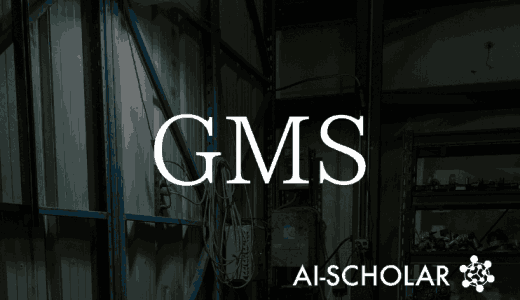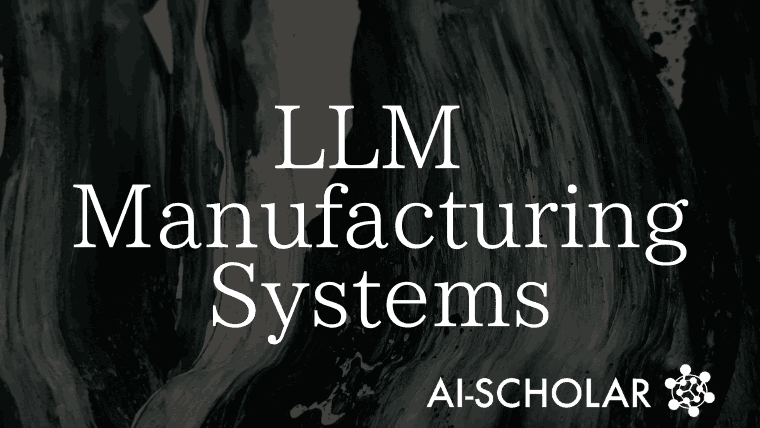
The Future Of Manufacturing Made Possible By Large-scale Language Models
3 main points
✔️ Integrating LLM increases flexibility and adaptability of manufacturing agents, allowing them to respond quickly to change
✔️ Leverages natural language processing for automatic assignment and efficient execution of manufacturing tasks
✔️ Specifically illustrates the effectiveness of LLM in G-code assignment and manufacturing operations through a case study Demonstration
Large Language Model-Enabled Multi-Agent Manufacturing Systems
code:
written by Jonghan Lim, Birgit Vogel-Heuser, Ilya Kovalenko
[Submitted on 4 Jun 2024 (v1), last revised 21 Jun 2024 (this version, v2)]
Comments: Accepted by arXiv
Subjects: Multiagent Systems (cs.MA); Artificial Intelligence (cs.AI)
The images used in this article are from the paper, the introductory slides, or were created based on them.
Summary
This research proposes a new framework for integrating large-scale language models (LLMs) into multi-agent systems (MAS) to address the difficulties that traditional manufacturing industries have in adapting to dynamic environments and responding quickly to manufacturing changes. Specifically, LLMs such as GPT-3.5 and GPT-4 enable agents to communicate in natural language and improve their ability to interpret human instructions and make decisions. This framework enhances the adaptability and coordination of MAS by enabling agents to effectively communicate, understand and execute tasks in the manufacturing process. As a practical example, a case study is presented that demonstrates how an agent can accurately distribute G-code and execute the manufacturing process. The results of the study highlight the importance of continuous integration of LLM and the development of sophisticated inter-agent communication protocols to achieve a more flexible manufacturing system.
Introduction
Manufacturers are facing increasing demand for customized products and increasing complexity in their production processes. In the midst of this transformation, manufacturers must respond quickly to evolving product specifications and cope with unanticipated operational changes. In this context, manufacturers must not only maintain high quality products and cost efficiency, but also be agile and responsive to a dynamically changing environment.
The use of multi-agent systems (MAS) is one important approach to enhance the adaptability and rapid response of manufacturing systems; MAS include multiple autonomous agents for decision making, communication, and coordination. Many MAS architectures have been developed for manufacturing systems, which enable decentralized decision making and enhance coordination among the various agents.
However, there are still challenges with the MAS framework. For example, the limited ability of agents to adapt to new formats and specifications can increase downtime. Additionally, there are limitations in the ability to process textual data. Textual data is more expressive than numerical data and contains a vast amount of knowledge that is currently underutilized in manufacturing. Formalizing unstructured text data using natural language processing (NLP) capabilities can reduce downtime and optimize processes.
The advent of large-scale language models (LLMs) offers a new solution to these challenges: LLMs have the ability to interpret, generate, and act on natural language instructions, enabling complex decision-making processes and adaptive responses. This allows manufacturing operators and system users with limited experience with processes and systems to quickly manage and optimize.
The main contributions of this paper are as follows
1. utilize LLM to streamline the assignment and execution of manufacturing tasks based on user instructions
2. ensure that LLM agents adapt to evolving specifications and execute the manufacturing process with appropriate resources
3. use natural language processing skills to understand context-specific instructions from users and other agents.
Related Research
Research in Multi-Agent Systems (MAS)
Multi-agent systems (MAS) exist in a variety of architectures developed to increase the flexibility of manufacturing systems. For example, the ADMARMS framework promotes design-based reconfigurability. Wang et al. also integrated MAS with big data analytics and reinforcement learning to achieve self-organization of manufacturing systems. Other studies have developed frameworks for dynamic resource and task allocation. These architectures aim to enhance communication between agents and improve the flexibility of manufacturing systems.
Study of MAS Using Large-Scale Language Models (LLMs)
With the advent of LLM, interest in the development of autonomous agents utilizing LLM technology has increased; LLM-equipped agents have been used in a variety of applications with multi-agent discussions to improve their problem-solving abilities. For example, Park et al. present a simulation using 25 generative agents in a virtual town to study social understanding. In addition, Wu et al. introduce an open-source framework called AutoGen, which enables customizable interactions between agents. These studies contribute to adaptability, cooperation, and natural language processing capabilities in the manufacturing industry.
Applied Research on LLM in The Manufacturing Industry
Advances in LLM technology have led to research on its implementation in manufacturing: Makatura et al. investigated the role of LLM in design and manufacturing, showing its potential and limitations in various CAD/CAM tasks. Jignasu et al. evaluated LLM's capabilities for debugging, modifying, and geometric transformations of G-code in 3D printing. These studies demonstrate the ability of LLMs to interpret, debug, and manipulate G-code; Fakih et al. evaluated LLMs' programming capabilities in industrial control systems and proposed a framework, LLM4PLC.
Based on these studies, this paper proposes a framework that integrates MAS and LLM for autonomous task assignment, adaptation to evolving specifications, and context-specific interpretation of instructions in the manufacturing process. The framework enhances the CAD/CAM workflow in manufacturing by automatically adapting the CAM process based on changes in CAD specifications, resulting in a seamless manufacturing operation.
Framework
Agent Initialization
This section describes the agent initialization process, a component of a multi-agent system (MAS). Agents are configured with defined roles, functions, and communication protocols to effectively operate and cooperate toward the goals of the system. The following initial prompts are given to all agents in the system:
You are part of a cooperative multi-agent system. If you are asked for a service that you can provide, please assist. Seek clarification from other agents as needed. Communicate with your peers to achieve your goals. If you do not know the answer, do not guess. Use only the functions provided. You may, however, invoke these functions recursively."
These instructions ensure that each agent operates within its capabilities, communicates effectively, and contributes to the objectives of the MAS.
Agent Functionality and LLM Integration
By integrating LLM, the agent gains the ability to interpret complex instructions and specifications and flexibly respond to manufacturing operations. The framework deciphers user instructions for manufacturing and utilizes OpenAI API function calls to perform specific manufacturing operations (e.g., milling, drilling). The chat function (Algorithm 2) facilitates interaction between agents and executes function calls according to the requirements of the manufacturing process.
Operations Workflow
The workflow shown in Figure 2 illustrates how user instructions are translated into executable operations. This approach translates high-level user instructions into machine-executable actions, improving responsiveness to changing conditions.
Figures 1 and 2 illustrate the MAS framework and operational workflow with LLM, respectively.

| Figure 1: Framework for LLM-enabled multi-agent manufacturing system |

| Figure 2: Operational workflow of the framework using LLM for task execution and coordination |
Case Study
Case Study Setup
This case study will evaluate the proposed framework and demonstrate how LLM can be integrated into the manufacturing process. The simulated manufacturing environment includes three machines dedicated to milling, drilling, and threading operations. To evaluate the adaptability of the system, two different processes were structured, a two-step process and a four-step process.
In a two-step process, the prototype product "product-1" is subjected to contouring and drilling operations.
The four-step processadditionally performs buckling and threading operations to test the system's ability to accommodate an expanded workflow.
Each product has a Product Agent (PA) with LLM to oversee high-level decision making related to that product. Each machine also has a Resource Agent (RA) that is responsible for a specific task. For example, "product-1" is directed to
Perform contouring to form an outline profile, followed by a drilling operation to create accurate holes. When all operations are complete, proceed to the exit buffer."
Figure 3 shows the case study setup. Figure 4 also details the G-code product specifications.

| Figure 3: Case Study Setup |

| Figure 4: Case Study G Code Product Specification |
Case Study Simulation and Results Analysis
The simulation was performed in the following steps (see Figure 5)
1. the user initializes the "Product-1" agent and all RAs according to Algorithm 1.
The system follows the operational workflow described in Section III-C.
3. the "Product-1" agent first informs the "Milling1" agent of the need for contouring and provides only the G-code section of the contouring.
4. when the "Milling1" agent completes the task, it notifies the "Product-1" agent that it is ready for the next operation.
5. this process continues by assigning the drilling operation to the "Drilling1" agent, etc.

| Figure 5: Agent Communication Results for Two-Step Process |
The simulation results confirmed the following
Communication and Understanding: Simulations of the 2- and 4-step processes confirmed that communication using natural language processing between agents was effective and that tasks were understood and performed.
Accuracy and Performance: the data in Table 1 show that GPT-4 achieved a 100% success rate for the 2-step process and an 86% success rate for the 4-step process. Performance was observed to decrease as task complexity increased (see Table 2).
| Table 1: Success rates of case studies with GPT-4 |

| Table 2: Detailed Error Analysis with GPT-4 Error Type 2 Steps 4 Steps |

Insights from the Case Study: This case study confirms the ability of MAS with integrated LLM to improve the efficiency of manufacturing task assignment and execution, adapt to product specifications, and facilitate communication among agents.
Challenges and Limitations
Performance
The main challenge in using LLM for manufacturing is to achieve the performance needed to produce high quality products; LLM is effective in processing natural language, but may lack accuracy. This can lead to machine failures and poor product quality. This framework can improve performance by applying fine-tuned LLMs with specific domain data.
Scalability
As data volume and task complexity increase, LLMs may have difficulty maintaining accuracy. This problem is especially acute in situations where large amounts of historical data or detailed prompts are required. This presents a challenge to the scalability of MAS with LLMs. In real industrial applications, an integrated knowledge base for MAS is needed to provide accurate run-time data for LLMs and improve scalability.
Reliability
Reliability is critical for integrating this method into real-world manufacturing scenarios; false responses and erroneous decisions generated by LLMs raise safety concerns. In addition, inferences made by LLMs need to be validated in real manufacturing scenarios. To address this, it is important to implement robust verification mechanisms and integrate real-time observation and monitoring capabilities. This will ensure that LLM outputs and inferences are consistent and allow for immediate adjustments in line with manufacturing standards and safety protocols.
Conclusions and Future Issues
This study explored ways to enhance the manufacturing process by integrating LLM into MAS. The results of this study are as follows
1. showed that LLM improves the efficiency of task allocation and increases operational adaptability.
2. the agent can adapt to evolving product specifications (e.g., G-code) and properly execute the manufacturing process
3. have the ability to facilitate communication and cooperation between agents through advanced natural language processing.
However, challenges related to task execution performance, scalability, and reliability were also identified. To address these challenges, verification and monitoring capabilities need to be enhanced. Strategies are also needed to address the diversity of user instructions.
Future research will focus on developing LLM-based communication protocols to enhance the ability of agents to learn from historical data and quickly respond to industry changes. In addition, they will continue their efforts to improve the accuracy and scalability of LLM. While this research focused on common manufacturing processes (e.g., drilling, milling), future work will evaluate the effectiveness of the framework on larger data sets to address the diversity of manufacturing tasks.
Categories related to this article




